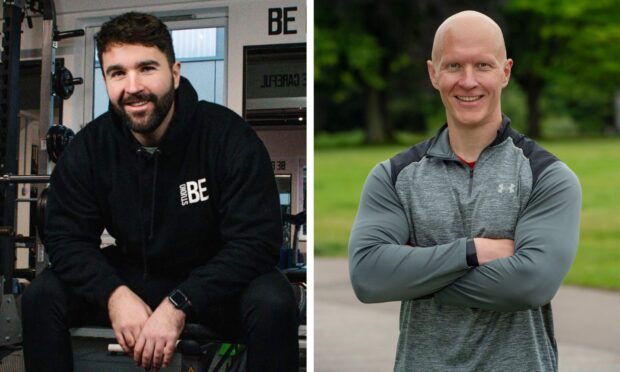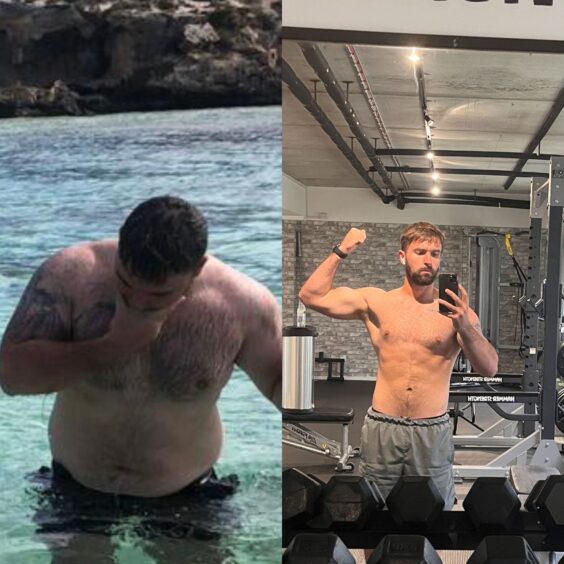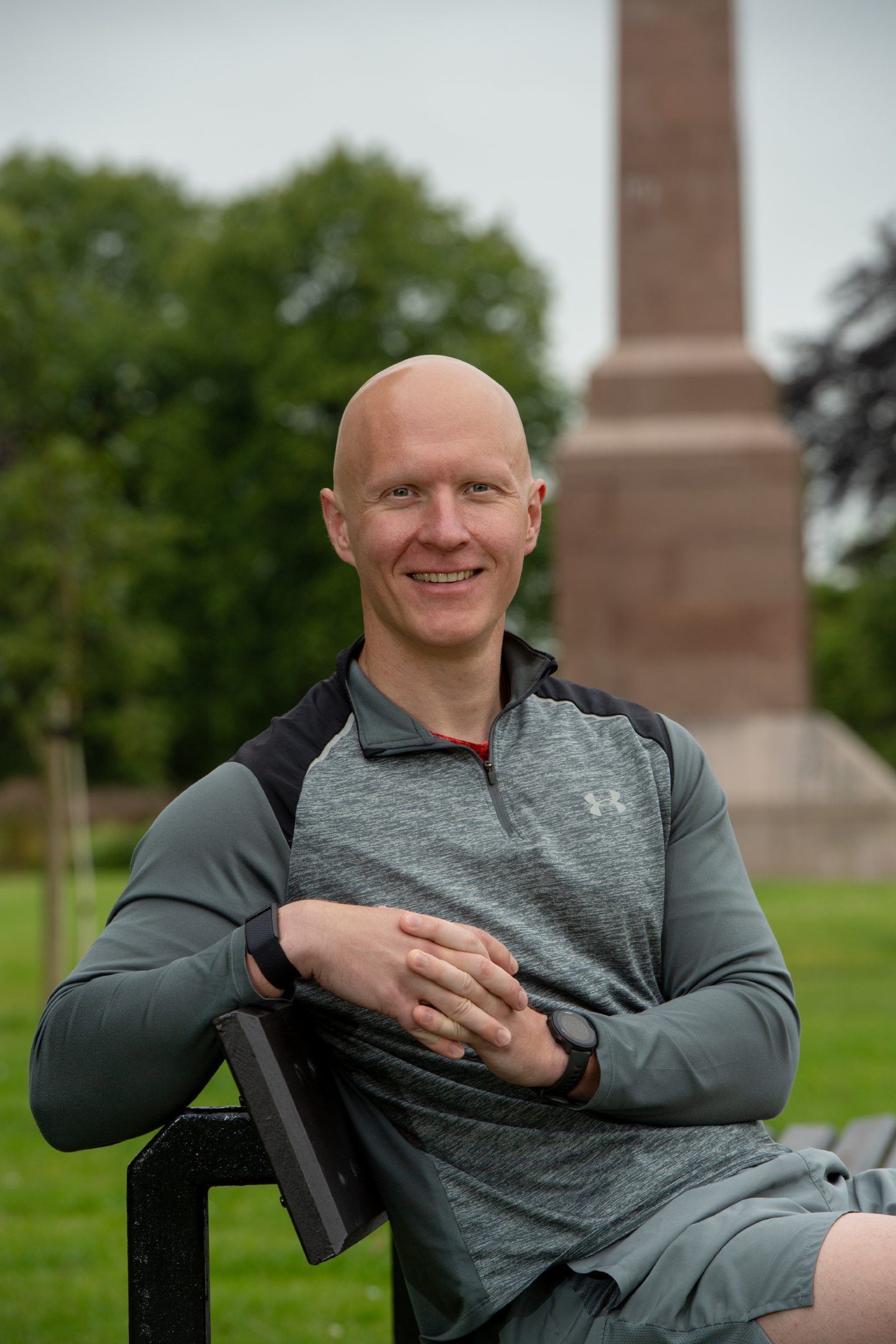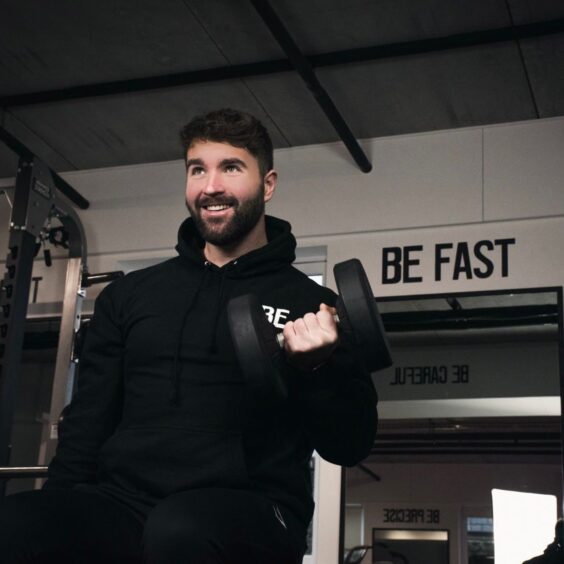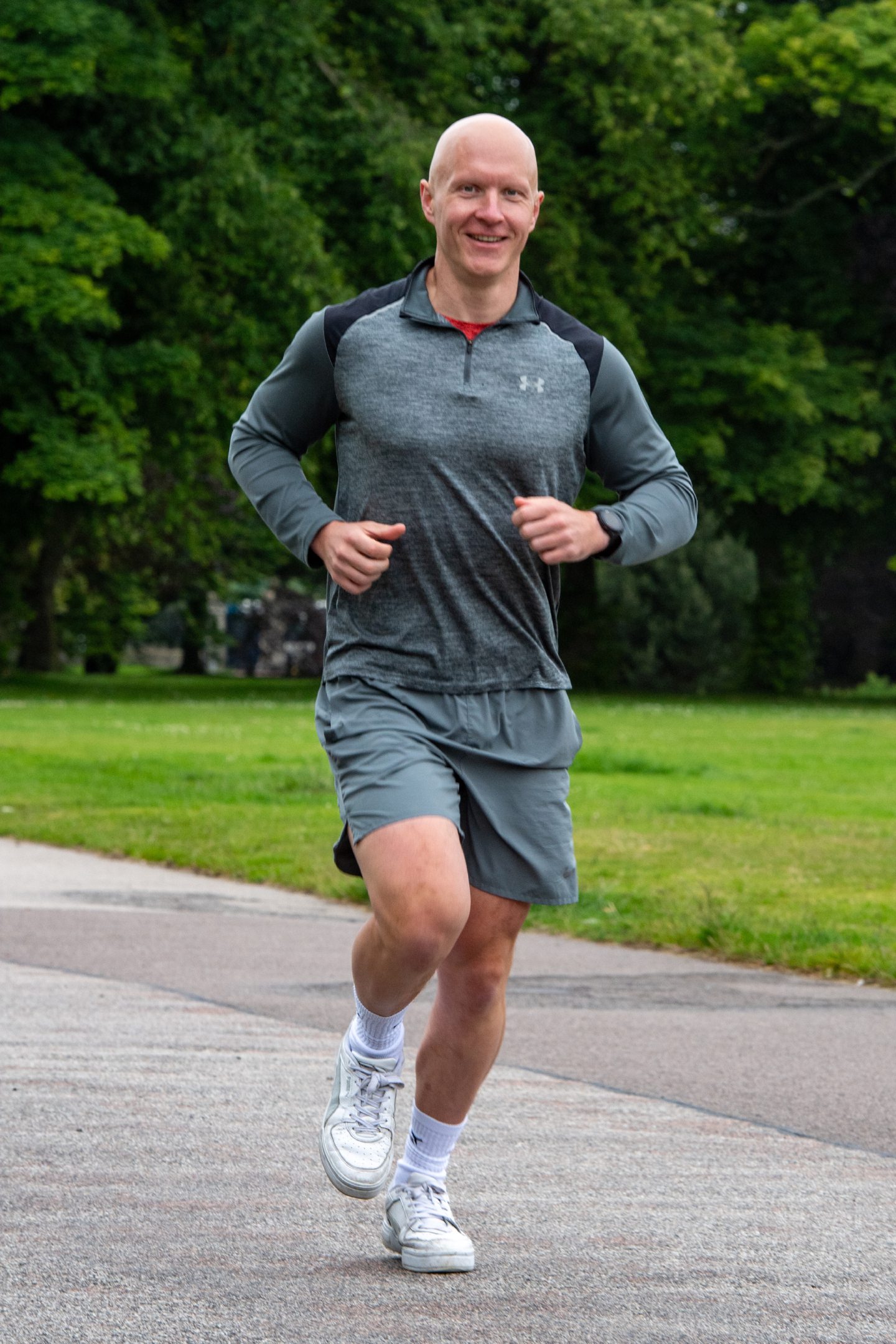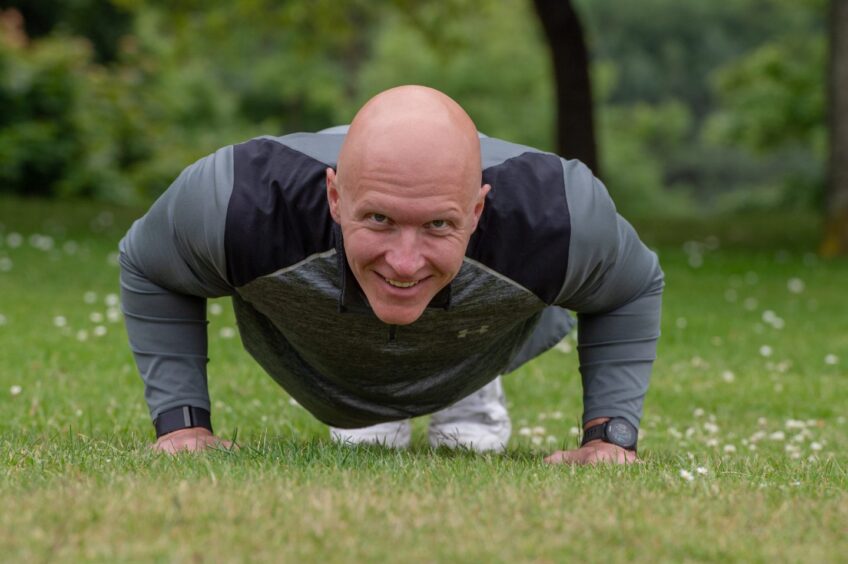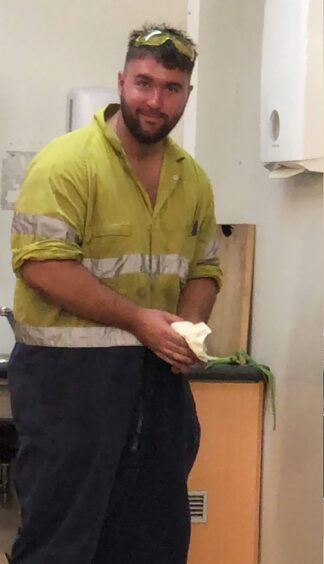Bradley Boyd, a 28-year-old fitness instructor from Inverurie, first noticed his hair falling out in August last year.
By May, almost all of the hair on his body was gone, the victim of an extreme form of alopecia — a condition with no definite cause.
It was a devastating loss for Bradley, and the second time the Inverurie man had faced a change in who he was.
Just four years ago, while working on a iron ore mine in Australia, he ballooned in weight to more than 20 stone.
No longer able to recognise himself in the mirror, he went on a strict diet and exercise regime and through grit and determination lost almost half his bodyweight.
The alopecia, however, was different. Extreme hair loss in adults, he was told, is rarely reversed. Save for a miracle, there was nothing he could do about it.
But that wasn’t true. There was something he could do about it.
He just didn’t know it yet.
‘Get fake eyelashes and tattoo your eyebrows’
When Bradley visited a dermatologist in April this year, he was at his wit’s end.
In six weeks, he had gone from having hair on his head — albeit patchy — and a moustache to losing everything.
What the dermatologist told him did not improve his mood.
“I was in and out in five minutes,” Bradley recalls. “He said, you’ll never get your hair back, so join a Facebook group for support, get fake eyelashes and tattoo your eyebrows.
“I think that was probably one of the lowest points.”
Bradley had alopecia, the same type of hair loss that many men experience, especially in later life.
For Bradley, however, it was an extreme form that affected his whole body. Alopecia UK estimates as few as 13,500 in the UK have this extreme version of the condition.
It also struck him at a very young age. And while hair loss can affect confidence at any time, for a man in his late 20s it was particularly upsetting.
“You’ve got that perception of who you really are,” Bradley explains, “I had a lot of the same feelings as when I was 130 kilos. I’d see myself in the mirror and be like, who are you?”
What is alopecia and why did it strike Bradley?
Not yet ready for tattooed eyebrows, Bradley realised that if the dermatologist wasn’t going to help, he’d have to find a solution himself.
So he did two things. First, he adopted healthier habits, just as he did when he decided to lose weight.
Alopecia is an autoimmune disease — the body’s immune system attacks the follicles of the hair, causing it to fall out.
Why it strikes is not clear, though stress could be a trigger. Perhaps it was no coincidence that for the past four years, Bradley had been building his own fitness coaching business, an experience that came with a fair share of stressful situations.
So he focussed on eating better, being more active and getting enough sleep (“Sleep is a big one,” he says).
He also bought a cold plunger, an outdoor water tub that is linked to boosting immune systems.
Well, in truth he purchased it for his sister, who has Crohn’s disease, an other autoimmune condition.
But, Bradley chuckles, “I wanted to use it myself.”
What happened when Bradley looked for alopecia treatments
The second part of his plan was to find a medical solution.
Ever since his hair started falling out, Bradley had been furiously Googling the condition — initially to discover what was happening to him, and then later to research solutions.
He discovered there is no cure for alopecia, only treatments, and that for many years, the medical consensus was that little could be done about it.
“They’d give you a steroid cream or steroid injections,” Bradley says. “It’s anywhere from like 3% to 17% chance of some regrowth.”
But Bradley was lucky. Things are moving fast in the world of alopecia treatment.
A new drug that had been in trials for years was finally approved for use in the NHS in February, just as Bradley was wrestling with his hair loss.
In April, NHS Scotland green lit the drug — called Ritlecitinib and sold under the brand name Litfulo.
The approval was met with delight from the alopecia community. Alopecia UK’s chief executive called it a “game changer”, and that the charity had been “inundated” with calls from across Scotland as people tried to access the new drug.
Reading about the drug online, Bradley realised it was the miracle he was looking for — a treatment with a 75% chance of full regrowth.
“I was like, this is it,” he recalls. “I have to get it.”
Bradley comes up against the NHS in bid to secure new alopecia drug
Bradley’s initial delight has since given way to frustration.
Though Ritlecitinib is approved for use by the NHS, few patients have been prescribed it.
A major issue is cost — as a new treatment, Ritlecitinib is expensive. A month’s worth of pills costs just under £1,000, plus the cost of regular blood work required to monitor progress.
There is also a heavy backlog because of high demand; a consultant warned Bradley the drug may not even be available privately until 2026.
“He joked that I could have a full head of hair and a beard by the time I get on this drug,” Bradley says.
The delays have angered alopecia patients around the country.
“We are still unsure what will happen for patients wishing to access this treatment via the NHS,” Alopecia UK said in April.
How Bradley is learning to accept his alopecia
Until he can get a Ritlecitinib prescription, Bradley will continue eating better and using his sister’s cold plunger — with her permission, of course.
He’s also set some fitness goals. On Sunday July 28, he will take part in a half Iron Man, a triathlon made up of a 1.2-mile swim in open water, a 56-mile bike ride and a half marathon to finish.
In preparation, he’s nicknamed himself the Alopecia Athlete. It’s partly a joke, but it’s also an attempt to wrest control back from his condition so he defines what it is rather than the other way around.
It’s not been easy, though.
The hair loss — and weight loss — have made him a better coach to clients looking to transform their appearance (“I can come from a place of authenticity,” he explains).
But it comes at a cost.
“I know just how much your physical appearance matters,” he says, “because I feel like I’ve had my physical appearance taken away.”
Ultimately, he says, it is about accepting what he looks like now, while holding out hope for a recovery.
“I’m in that process just now,” he says when asked if he is prepared to look like this for the rest of his life.
“But I’m trying my best to get my hair back as well.”
Bradley charts his fitness journey and alopecia experience on Instagram and TikTok.
